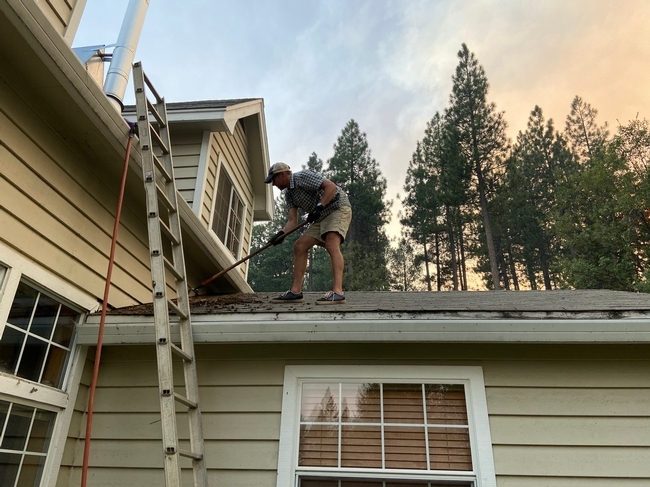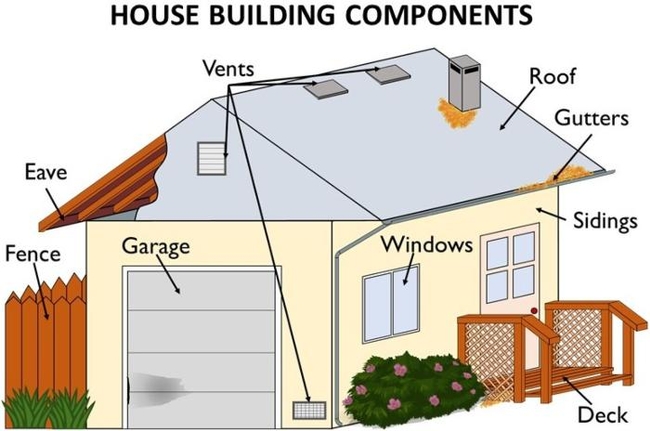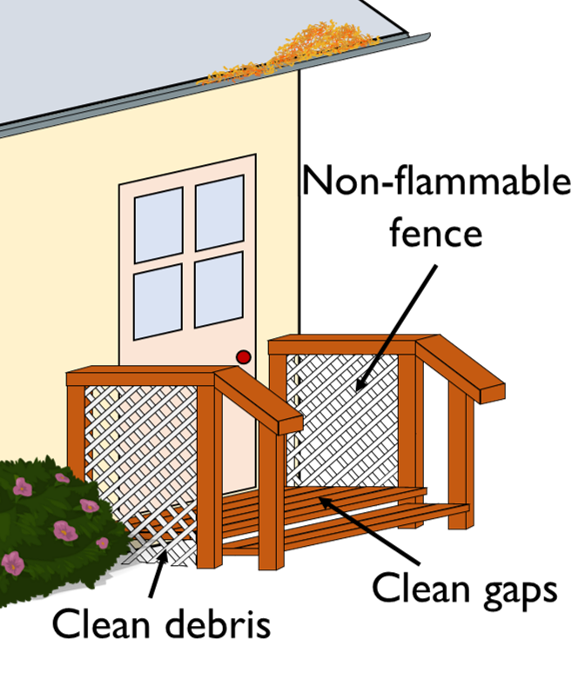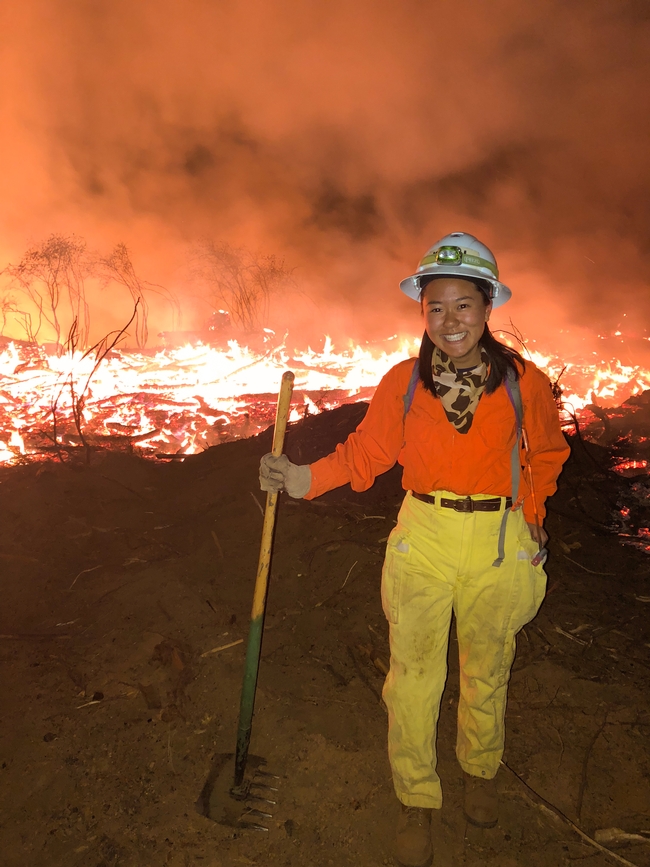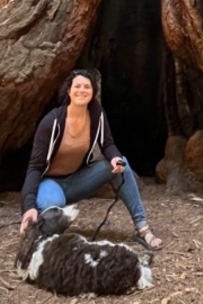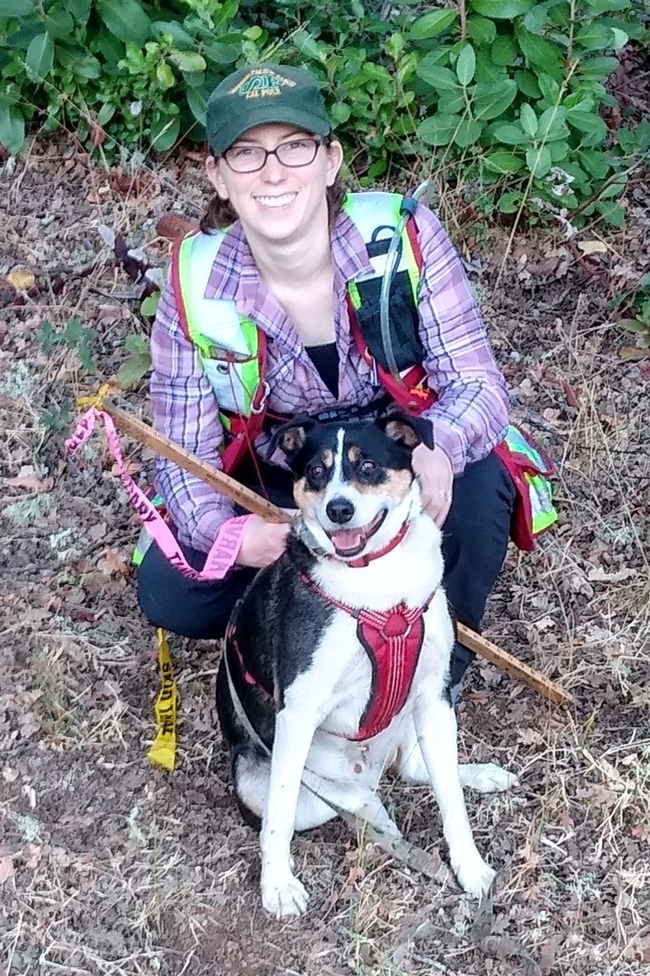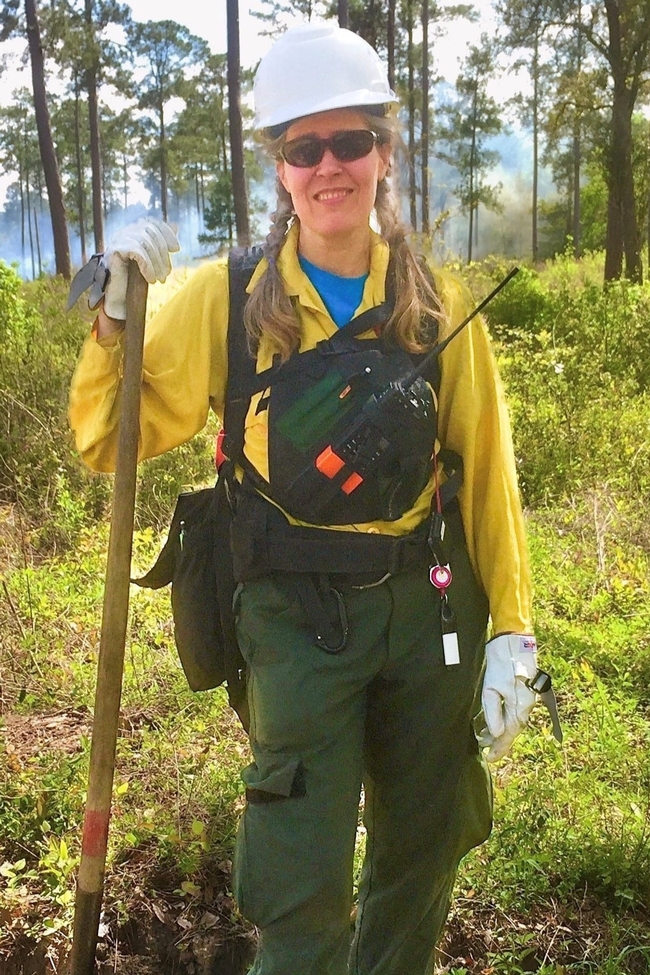Posts Tagged: mitigation
Five things you can do this weekend to help protect your home from wildfire
Despite recent rains, fire remains a danger across California, as there's still plenty of time this fall for grass, woody debris and other flammable material to become dry and ignite.
“The smaller the fuels – pine needles, grass, and small twigs – the faster they can dry out, meaning they will be ready to burn again a few days or weeks after a large rainstorm,” said Susie Kocher, a UC Cooperative Extension forestry and natural resources advisor for the Central Sierra, urging residents to take steps to prevent or limit potential fire damage.
When it comes to “home hardening” and essential wildfire preparations in this age of drought and climate change, not every project requires a bank-breaking budget and an army of contractors.
There are small – but significant – home and landscaping improvements that most people can complete by themselves during a single weekend, with a quick run to the hardware store and some basic planning and safety precautions.
“There are a lot of factors that play into your home's vulnerability to ignition; small changes and upgrades can help reduce some of that risk for people living in high wildfire risk areas,” Kocher explained. “The bigger projects like replacing windows and roofs are very important, but there are definitely smaller projects that people can tackle right away at lower cost that also reduce risk. The main goal of these actions is to reduce the risk that wildfire embers can ignite your home.”
Kocher recommends these five measures as simple but crucial ways to bolster your home's wildfire resiliency.
Clean debris from your roof. Because of its expansive surface, the roof is the most susceptible area of your house to embers. Removing accumulated leaves and needles is especially important if you have a “complex roof” with dormers or other elements – that's where embers gather, too, and could come in contact with flammable siding. (And while you're up there, give those gutters a good swabbing.) Learn more about protecting your roof and gutters.
Install metal flashing in vulnerable spots. Replacing all your siding with noncombustible material can be pricey, but a more manageable task would be adding corrosion-resistant metal flashing to select areas: roof-to-wall intersections, the place where the chimney comes out of the roof, and the edge where the deck meets the house. Learn other ways to shore up your siding.
Remove debris from between the boards of your deck and fence. Embers can ignite leaves and needles stuck between the boards, so be sure to keep those gaps clean and clear. Learn additional steps to harden your deck and prepare your fence.
Take out all vegetation (alive or dead) within five feet of your home. Creating defensible space immediately next to your home is a top priority, so be sure there's nothing combustible within this “Zone Zero.” Plants, mulch, woodpiles, wicker furniture or anything that can catch fire should be removed. Learn what to do in the other “zones” as you move farther from your home.
Inspect vents and upgrade to finer mesh screens. Install or swap in noncombustible, corrosion-resistant metal mesh screening that is at least 1/8” (1/16” would be even better but requires more frequent maintenance). These screens help prevent embers from entering your attic and crawl space. In addition, put together some vent covers that can be deployed if you have time before a wildfire arrives. Learn other ways to reduce vulnerability of vents.
For more in-depth explanations and next steps, Kocher suggests visiting the UC ANR wildfire website (https://ucanr.edu/sites/fire/Prepare) and reviewing this home retrofit guide (https://bit.ly/3RaL54u).
New advisors share crucial wildfire expertise
UC ANR hires more fire advisors to address growing threat to California communities
Bringing more expertise to more places across the state, University of California Agriculture and Natural Resources continues to hire fire advisors to help communities prepare for one of the most devastating climate-fueled threats.
With wildfires a constant danger as drought grips California, five highly skilled UC Cooperative Extension experts have joined the organization since early May:
- Katie Low, statewide fire coordinator (and also serving Nevada and Placer counties)
- Alison Deak, fire advisor serving Mariposa, Fresno and Madera counties
- Tori Norville, fire advisor serving Sonoma, Napa and Marin counties
- Barb Satink Wolfson, fire advisor serving Monterey, San Benito, Santa Clara and Santa Cruz counties
- Luca Carmignani, fire advisor serving Los Angeles and Orange counties
These positions – as well as other recent additions in agriculture and natural resources fields – are made possible by California's commitment, as reflected in the state budget, to improve the lives of residents in the face of a changing climate.
This robust team of fire experts provide broad knowledge and practical advice on a wide range of topics, including fire hazard mitigation, fire ecology, prescribed fire, wildland fire research, forest and wildlife management, and climate change effects.
Although their specific areas of expertise vary, all the new fire advisors are dedicated to helping residents and community groups across California become more fire-aware, adapted and resilient. They share vital information on how Californians can prepare homes, landscapes and property for wildfire.
Katie Low
Katie Low, who began as the University of California Cooperative Extension statewide fire coordinator on Sept. 1, will fulfill two important functions for UC Agriculture and Natural Resources' team of fire experts.
First, she will coordinate and partner with UCCE fire advisors throughout California to develop and deliver wildfire-related science and outreach materials for a wide range of communities across the state. Low said encouraging diversity in the network of fire experts and engaged communities will be crucial.
“One of my goals is to help build and maintain a diverse and inclusive community of fire and natural resource professionals,” she said.
Based at the UCCE office in Auburn, Low also will collaborate with local natural resource professionals and residents in Nevada and Placer counties on projects that bolster community and ecosystem resilience to wildfire and climate change.
“I look forward to working with community groups, land managers and scientists to implement viable fire-resilient management strategies for ecosystems in the region and statewide,” Low said.
Equipped with bachelor's degrees in geography and ecosystems management and forestry, as well as a master's in forestry, all from UC Berkeley, Low brings to UC ANR a wealth of knowledge and a variety of experience.
As a fire and forest ecologist, she studied the impacts of fuels-reduction and forest-restoration treatments on Sierra Nevada mixed-conifer forests. Low also worked as operations coordinator for the California Outdoor Engagement Coalition, and as a forestry aide for California Department of Forestry and Fire Protection's Forest Biometrics Program.
Low can be reached at 530-889-7385 and katlow@ucanr.edu; follow her on Twitter @lowseverityfire.
Alison Deak
Alison Deak joined UC Cooperative Extension in August 2022 as a fire advisor for Mariposa, Fresno and Madera counties. Since she began work, Deak has been focused on conducting a needs assessment and building rapport with community leaders.
Her role as fire advisor will include promoting the use of prescribed fire to help restore fire adapted landscapes. She will also prioritize community education, applied research and partnership building efforts that are based on scientifically informed ways to help communities mitigate, prepare for, and recover from wildfire.
Originally from northeast Ohio where there are no wildfires according to Deak, it was not until she moved to Colorado for college that she learned of their impact.
When the 2012 Waldo Canyon Fire occurred, Deak felt like her playground was burning down so she acted. She began volunteering with the wildfire recovery effort and her career into fire science took off from there.
Deak earned a bachelor's in geography and environmental studies from the University of Colorado in Colorado Springs and master's degrees in geography and nonprofit management from the University of Oregon.
Before moving to California and joining UC ANR, Deak worked as a wildland firefighter with the United States Forest Service and Bureau of Land Management.
When asked what she is looking forward to most, Deak shared that she is passionate about increasing diversity in the fire science field and, particularly, empowering more women to join. She is eager to help community members prepare for wildfire and mitigate fire risk in a safe and competent manner.
Deak is located at the UC Cooperative Extension office in Mariposa County and can be reached at aldeak@ucanr.edu.
Tori Norville
Tori Norville started on Aug. 1 as the new UC Cooperative Extension fire advisor for Sonoma, Napa and Marin counties.
In this capacity, Norville will work with residents and organizations within the wildland-urban interface to encourage and cultivate fire-adapted communities. She aims to provide education and outreach on home hardening, defensible space and the importance of forest and fuel management on the landscape.
While pursuing her bachelor's degree in forestry and natural resources at Cal Poly San Luis Obispo, Norville became interested in “disturbance ecology” – how factors such as disease, insects and fire affect landscapes and environments.
“Many of the forest health problems we are seeing are stemming from a lack of disturbance, which traditionally was fire,” Norville said.
Her understanding of fire and its effects deepened during her master's degree studies in forestry science (also at Cal Poly SLO), as well as through her seven years with CAL FIRE at the Jackson Demonstration State Forest in Mendocino County. She worked as the Registered Professional Forester for its Timber Sales Program, and then the Research and Demonstration Program.
Norville's firsthand experiences from the past few fire seasons have helped shape her goals and approach. She hopes to “work holistically with disturbances” – specifically fire – on the landscape to foster healthy forests and ecosystems that are adaptable and resilient, while also researching the environmental and social aspects of fuel-reduction projects and prescribed fire.
“Hopefully, I can begin to change the perception of fire from something we need to fear, to something we respect,” she said.
Norville, based at the UCCE office in Santa Rosa in Sonoma County, can be reached at trnorville@ucanr.edu.
Barb Satink Wolfson
Barb Satink Wolfson began in her role as UC Cooperative Extension fire advisor for Monterey, San Benito, Santa Clara and Santa Cruz counties on June 30.
Her primary responsibilities include wildland fire-related research and outreach for the Central Coast region, while building trust, strong partnerships and collaborative relationships within both professional and non-professional communities.
Satink Wolfson earned her B.S. and M.S. in forestry from Northern Arizona University, and brings to UC ANR more than 20 years of fire-research and outreach experience in Arizona. Her favorite job, though, was working as a backcountry ranger in Yosemite National Park during her undergraduate years.
In her new role, Satink Wolfson hopes to address some of the questions behind the use of prescribed fire in a variety of ecosystems (such as coastal prairies and oak woodlands), and help all Central Coast communities build resilience to wildland fire so residents can live safely within fire-adapted landscapes.
Satink Wolfson, based at the UCCE office in Hollister, can be reached at bsatinkwolfson@ucanr.edu.
Luca Carmignani
Luca Carmignani joined UCCE as a fire advisor for Orange and Los Angeles counties May 2. His research interests include image analysis, computer programming and scientific outreach.
Prior to joining UC ANR, Carmignani was a postdoctoral researcher in the Berkeley Fire Research Lab at UC Berkeley. His research has focused on fire and combustion applications, from wildland fires to material flammability.
He earned his Ph.D. in engineering sciences from the joint doctoral program between UC San Diego and San Diego State University after obtaining his bachelor's and master's degrees in aerospace engineering from the University of Pisa in Italy.
Carmignani is based at South Coast Research and Extension Center in Irvine and can be reached at carmignani@ucanr.edu and (949) 237-2956. Follow him on Twitter @l_carmignani.

